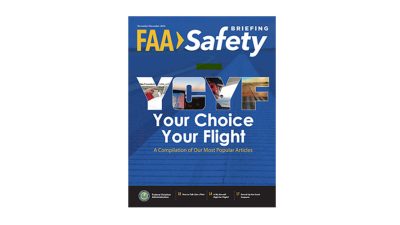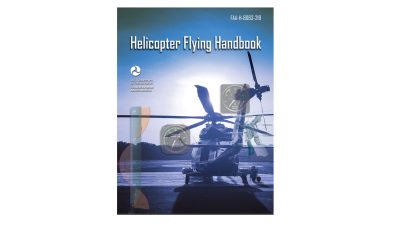The Federal Aviation Administration (FAA) introduced BasicMed in 2017 as an alternative to the traditional medical certification process for pilots. Designed to simplify the medical requirements for many general aviation pilots, BasicMed allows individuals to continue flying without needing a conventional FAA medical certificate, provided they meet certain health and training conditions. This program has made flying more accessible for countless pilots, particularly those who do not require a full medical certificate for recreational or personal aviation activities.
In this blog post, we’ll dive deep into what BasicMed is, how it works, the eligibility criteria, and its benefits and limitations.
BasicMed Overview
BasicMed was created as part of the FAA Extension, Safety, and Security Act of 2016 and officially took effect on May 1, 2017. The program was aimed at general aviation pilots who wished to continue flying without undergoing the rigorous process of obtaining an FAA third-class medical certificate. Instead, pilots can meet BasicMed requirements through a combination of an online medical education course and a physical examination with a state-licensed physician.
On July 15, 2016, Congress passed legislation to extend the FAA’s funding. This legislation, known as the FAA Extension, Safety, and Security Act of 2016 (FESSA), included relief from holding an FAA medical certificate for certain pilots. This relief is called BasicMed.
Eligibility Requirements for BasicMed
To operate under BasicMed, pilots must meet specific criteria:
- Previous Medical Certificate: Pilots must have held a valid FAA medical certificate at some point after July 14, 2006. The most recent medical certificate must not have been denied, revoked, or suspended.
- Physical Examination: Pilots need to undergo a physical examination by a state-licensed physician, who will fill out the Comprehensive Medical Examination Checklist (CMEC). Print off FAA Form 8700-2 (BasicMed CMEC) and bring it to your physical exam. This examination must be repeated every 48 months.
- Online Medical Education Course: Pilots must complete an online medical education course every 24 months. The course covers topics related to aviation health, medication use, and risk factors that could affect a pilot’s ability to operate an aircraft safely. There are two free online courses to choose from: the Mayo Clinic BasicMed Online Training Course or AOPA’s BasicMed Medical Self-Assessment: A Pilot’s Guide to Flying Healthy.
- Driver’s License: Pilots must hold a valid U.S. driver’s license to meet the BasicMed requirements. The driver’s license serves as an additional indication of the pilot’s fitness to operate a vehicle and, by extension, an aircraft.
BasicMed Limitations
While BasicMed provides a more flexible path for pilots, it comes with certain limitations to ensure safety:
- Flight Altitude and Speed: Pilots flying under BasicMed are limited to operating at or below 18,000 feet mean sea level (MSL) and at speeds of no more than 250 knots.
- Aircraft Restrictions: Aircraft operated under BasicMed must have a maximum certificated takeoff weight of 12,500 pounds or less. Previously, the weight limit was set at 6,000 pounds, but recent updates in 2024 have doubled the weight limit, allowing pilots to operate larger general aviation aircraft.
- Passenger and Occupant Limits: Pilots can now carry up to six passengers, with a total of seven occupants onboard, including the pilot. This recent expansion provides greater flexibility for group travel and family trips.
- No Compensation or Hire: Pilots operating under BasicMed cannot fly for compensation or hire, meaning the program is intended primarily for private and recreational use rather than commercial operations.
- Operating Requirements: BasicMed pilots must operate under Visual Flight Rules (VFR) or Instrument Flight Rules (IFR), within the United States, at or below 18,000 feet MSL, and at speeds not exceeding 250 knots. Flights cannot be operated for compensation or hire.
Medical Conditions Requiring One Special Issuance Before Operating under BasicMed
Pilots with certain medical conditions must obtain a one-time special issuance before operating under BasicMed. These conditions include:
- Mental Health Disorders: Includes a personality disorder severe enough to have repeatedly manifested in overt acts, psychosis (manifested by delusions, hallucinations, or disorganized behavior), bipolar disorder, or substance dependence within the previous two years.
- Neurological Disorders: Includes epilepsy, disturbances of consciousness without satisfactory medical explanation, or transient loss of control of nervous system functions without satisfactory medical explanation.
- Cardiovascular Conditions: Requires a one-time special issuance for each diagnosis of myocardial infarction, coronary heart disease that has required treatment, cardiac valve replacement, or heart replacement.
Recent Updates to BasicMed
In November 2024, the FAA implemented several updates to BasicMed as part of the FAA Reauthorization Act of 2024. These updates aimed to expand the scope and utility of the program:
- Increased Maximum Takeoff Weight: The weight limit for aircraft was increased from 6,000 pounds to 12,500 pounds, allowing pilots to operate larger and more capable aircraft under BasicMed.
- Increased Passenger Capacity: The number of allowable passengers was increased from five to six, resulting in a total of seven occupants onboard, including the pilot.
- Flight Check Capabilities: The updates also allow designated pilot examiners to conduct flight checks in aircraft covered under BasicMed, simplifying training and certification processes.
Benefits of BasicMed
BasicMed offers numerous benefits to pilots, making flying more accessible and reducing the administrative burden of obtaining a medical certificate. Key benefits include:
- Flexibility: Pilots can fly a broader range of aircraft, particularly with the increased weight and passenger limits introduced in 2024.
- Accessibility: By allowing pilots to visit a state-licensed physician rather than an aviation medical examiner, BasicMed simplifies the process of meeting medical requirements, making it easier for pilots to remain active.
- Cost Savings: BasicMed can be more cost-effective since it avoids the need for specialized FAA medical examinations, which may require additional fees and travel.
How to Get Started with BasicMed
If you’re interested in operating under BasicMed, here are the steps to get started:
- Schedule a Physical Examination: Visit a state-licensed physician for a physical exam and have them complete the Comprehensive Medical Examination Checklist (CMEC).
- Complete the Online Medical Course: Choose an FAA-approved BasicMed online medical education course. These courses are offered by several organizations, including AOPA and Mayo Clinic, and must be completed every two years. Mayo Clinic BasicMed Online Training Course, AOPA’s BasicMed Medical Self-Assessment
- Keep Records: Keep a copy of your completed CMEC and your certificate of completion from the online medical course. You do not need to submit these documents to the FAA, but they must be available for inspection if requested.
BasicMed has proven to be a game-changer for many general aviation pilots, providing a simpler, more accessible way to meet medical requirements while still ensuring safety in the skies. With the recent 2024 updates, BasicMed now offers even greater flexibility, allowing pilots to operate larger aircraft and carry more passengers. Whether you’re a recreational pilot or someone looking to fly for personal travel, BasicMed provides a valuable alternative to the traditional medical certification process.
If you still have questions, check out the following resources:
- AC 68-1A BasicMed PDF
- July/August 2017 FAA Safety Briefing: The BasicMed Issue (PDF)




